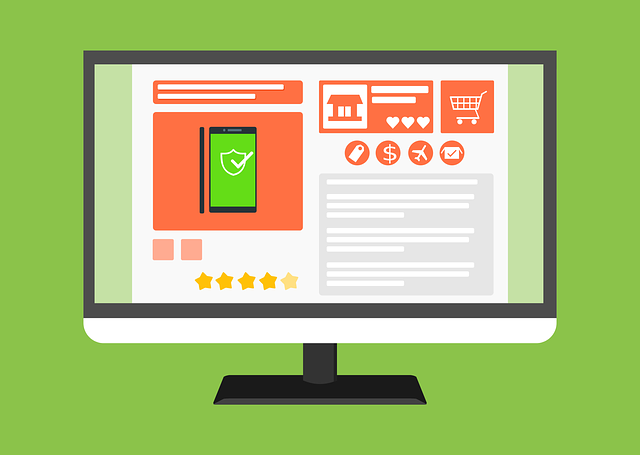Chatbots have become essential tools in e-commerce, driving sales and enhancing customer engagement through instant support and personalized interactions. Crafting an effective chatbot requires defining its scope, setting clear objectives, and integrating features tailored to user needs. Technology selection varies from pre-built platforms for basics to custom development using AI libraries for advanced flexibility. Conversational flows and AI model training are vital steps, involving mapping interactions and leveraging NLP and deep learning. Integration and testing ensure seamless operations, improving customer experience, sales, and cost efficiency on the ecommerce website.
Building an AI Chatbot for your ecommerce website can significantly enhance customer engagement and sales. This comprehensive guide walks you through the entire process, from understanding the purpose and benefits of chatbots in ecommerce to integrating and testing your bot. We’ll explore defining your chatbot’s scope, choosing the right technology, designing conversational flows, and training AI models effectively. By the end, you’ll be equipped to create a powerful chatbot that drives conversions on your ecommerce website.
- Understanding the Purpose and Benefits of Chatbots for Ecommerce
- Defining Your Chatbot's Scope and Functionality
- Choosing the Right Technology and Development Tools
- Designing Conversational Flows and Training the AI Model
- Integrating and Testing Your Chatbot on the Ecommerce Website
Understanding the Purpose and Benefits of Chatbots for Ecommerce

Chatbots have emerged as powerful tools for enhancing customer engagement and driving sales in the competitive world of ecommerce. By integrating a chatbot on an ecommerce website, businesses can provide instant support to customers, answer common queries, and guide them through the purchasing process. This not only improves user experience but also boosts conversion rates.
For example, a chatbot can assist shoppers by offering product recommendations based on their browsing history or providing detailed information about specific items. It can handle tasks like inventory checks, order status updates, and even process simple returns or exchanges. By leveraging natural language processing (NLP), these chatbots deliver personalized interactions, making customers feel valued and understood. This level of engagement fosters trust and encourages repeat purchases, ultimately transforming the ecommerce experience into a seamless and satisfying journey.
Defining Your Chatbot's Scope and Functionality

When building a chatbot for an ecommerce website, defining its scope and functionality is crucial for creating a user-friendly and effective tool. Start by understanding your target audience’s needs and pain points. A well-defined chatbot should prioritize tasks like answering frequently asked questions (FAQs), providing product recommendations, facilitating returns or exchanges, and offering real-time assistance during the purchase process.
This involves setting clear objectives for your chatbot, such as increasing customer satisfaction, reducing response times, or boosting sales conversions. Incorporate specific features based on these goals, like an extensive knowledge base, integration with inventory systems, or the ability to understand complex user queries related to product specifications and availability. Tailoring the chatbot’s functionality to meet these needs ensures a seamless and valuable experience for your online shoppers.
Choosing the Right Technology and Development Tools

When building a chatbot for an ecommerce website, selecting the appropriate technology and development tools is paramount to ensuring its effectiveness and seamless integration. The choice should align with your project’s scope, desired features, and future scalability needs.
Popular options include leveraging pre-built chatbot platforms that offer user-friendly interfaces and customizable templates. These platforms often provide robust natural language processing (NLP) capabilities, enabling the chatbot to understand and respond to customer queries accurately. For more complex requirements or unique functionalities, developing a custom chatbot using programming languages like Python, Java, or Node.js alongside AI libraries such as TensorFlow or PyTorch can be beneficial. This approach offers greater flexibility but demands more time and expertise.
Designing Conversational Flows and Training the AI Model

Designing Conversational Flows and Training the AI Model is a crucial step in developing an effective chatbot for your ecommerce website. This involves mapping out the potential conversations that your chatbot might have with customers, from simple queries about product availability to more complex assistance with purchases. By creating detailed conversational flows, you ensure that your chatbot can guide users through their shopping journey seamlessly.
The AI model is trained using these conversational flows and a vast dataset of customer interactions. This training process enables the model to learn patterns in user language, understand context, and generate appropriate responses. Advanced machine learning techniques, such as natural language processing (NLP) and deep learning, power this training, allowing the chatbot to continuously improve its performance over time. As it gains more interaction data, the AI model becomes better equipped to handle a wide range of customer inquiries, enhancing the overall user experience on your ecommerce website.
Integrating and Testing Your Chatbot on the Ecommerce Website

After developing your AI chatbot, it’s crucial to integrate and test it seamlessly on your ecommerce website. This process involves deploying the chatbot onto your platform, ensuring its smooth interaction with existing systems like customer relationship management (CRM) tools and payment gateways. A successful integration allows the chatbot to access customer data, provide personalized recommendations, and facilitate transactions without glitches.
Testing should cover a wide range of scenarios, including common queries, edge cases, and potential failures. Use real user inputs and simulate various interactions to ensure the chatbot understands and responds accurately. Regular testing not only improves performance but also enhances the overall customer experience, making your ecommerce website more engaging and efficient. Remember, a well-integrated and thoroughly tested chatbot for your ecommerce website can significantly boost sales, reduce customer support costs, and foster stronger customer relationships.
Building an AI chatbot for your ecommerce website is a strategic move that can enhance customer experience, boost sales, and drive engagement. By understanding your target audience’s needs, defining clear scope, choosing the right technology, designing intuitive conversational flows, and rigorously testing, you can create a powerful chatbot that delivers personalized assistance 24/7. Integrate this valuable tool into your ecommerce ecosystem to stay competitive in today’s digital marketplace.
